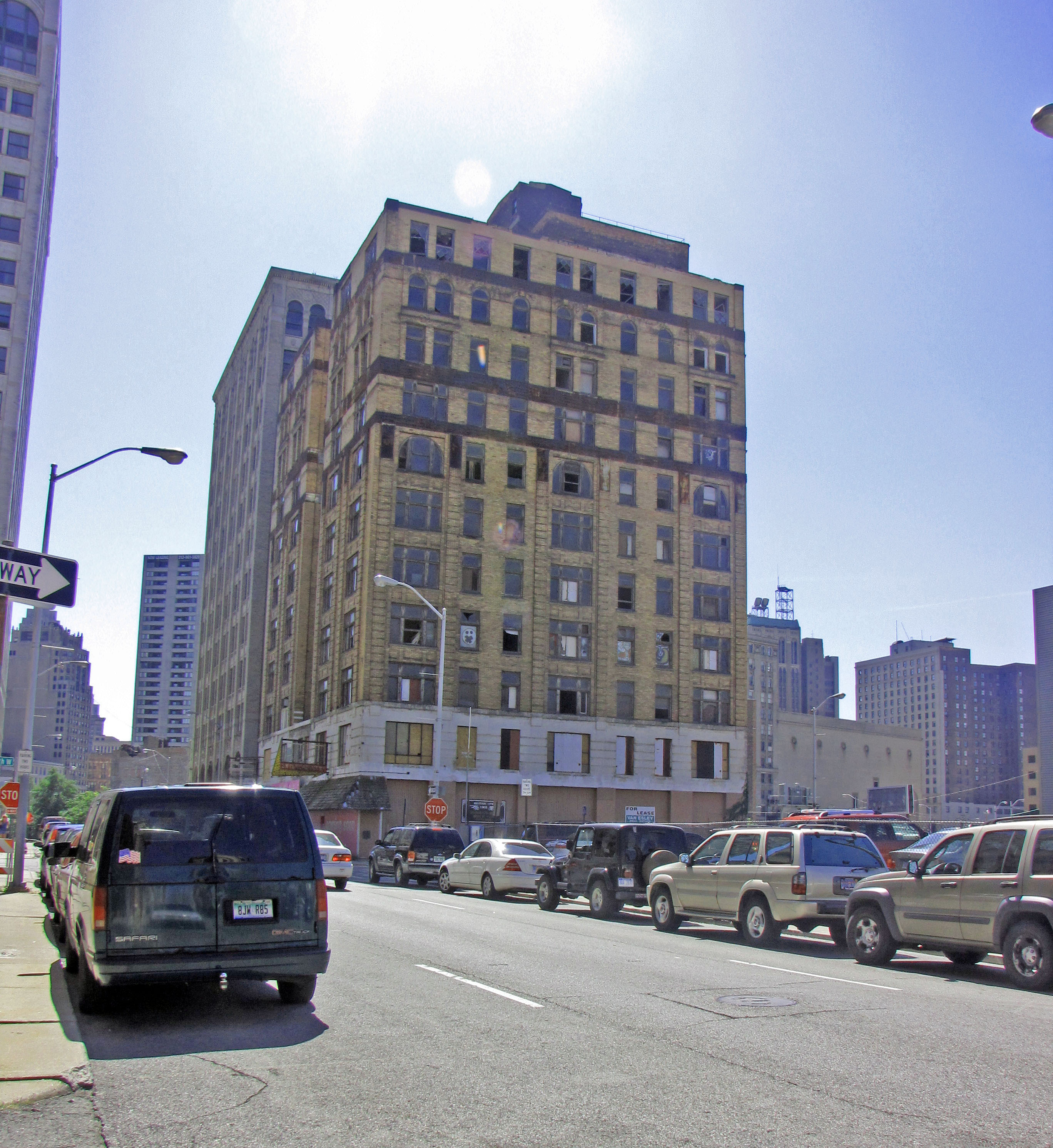

This was one of the few pre-automobile era hotels in Detroit to survive into the Twentieth First Century. Most of the late nineteenth century hotels that were built downtown as Detroit became a national manufacturing center were razed to make room for larger and more modern structures. The building you see was completed in 1905 and used as a hotel for only a decade or so. About the time of World War I, it was converted, I think, into an apartment building, reflecting the great demand for housing at that time. In 1922 or thereabouts, it was converted into an office building, reflecting the need for downtown commercial space in that booming decade.
During the 1920s, developers intended to profit from making Park Avenue into elegant and prestigious residential and commercial locations. They were successful for a few years. New structures arose, including the Park Avenue Building, the Royal Palm Hotel, the Women’s City Club, the Detroit Life Building, the Iodent Building and the A. W. Campau Realty Company Building (now Cliff Bell’s Jazz Club). The Charlevoix had been on Park Avenue for two decades before sod was turned for those new structures, making it the oldest Park Avenue structure.
In the early 1970s, there was an effort to revive Park Avenue, but most investment funds flowed toward making the Renaissance Center successful, so Park Avenue languished. The Hotel Charlevoix building was purchased by Ralph Sachs in 1981. Shortly thereafter, all tenants left and it has been vacant since the mid-1980s. The Illich Development real estate development firm renovated the Iodent Building and announced in 2007, and once again in 2009, that the Detroit Life Building would be reconstructed for use as office space. In 2009, the owners of Hotel Charlevoix put up new fencing around the structure and placed a large sign advertising the historic structure and seeking a purchaser or investor. It is possible that within a couple of decades, a few more of the once appealing structures on Park Avenue will be revived if the demand for office and residential space in downtown Detroit increases.
William S. Joy designed this building. Joy was born in Detroit in 1864 and apprenticed with Detroit architect Mortimer Smith to learn his profession. The Hotel Charlevoix is an eyesore in 2009, but you can appreciate Joy’s excellent choice of a color for the brick he used. And a close look reveals a few architectural embellishments. William Joy designed a number of other Detroit buildings shortly after the turn of the Twentieth Century, including the Marlborough Flats, the Norwood Theater in the 6500 block on Woodward, the Wellington Apartments and the Vendome Building. Perhaps, the Hotel Charlevoix is the one that remains. You may also see the address of the Hotel Charlevoix listed as 2033 Park Avenue.
In the spring of 2012, pieces of this old building began falling onto the Park Avenue sidewalk. This city erected barricades to prevent pedestrians from walking near the structure. So far as I know, the owner made no major efforts to renovate the building. There were some comments on Detroit websites about the possible destruction of this building but there was no major effort to save it since it would have been extremely expensive to convert it to profitable use. Early in the morning of Sunday June 22, 2013; this building was torn down, a process that apparently took only a couple of hours. As of summer, 2013 there were no announced plans for the reuse of this Park Avenue space.
Architect: William S. Joy
Architectural style: Beaux Arts
Date of construction: 1905
Date of destruction: June 22, 2013
City of Detroit Designated Historic District: Not listed
State of Michigan Register of Historic Sites: The Hotel Charlevoix is within
The Park Avenue Historic District listed April 18, 1996
National Register of Historic Places: The Hotel Charlevoix is within the Park
Avenue Historic District listed May 13, 1997.
Photograph: Ren Farley; September 3, 2009
Description updated: June, 2013